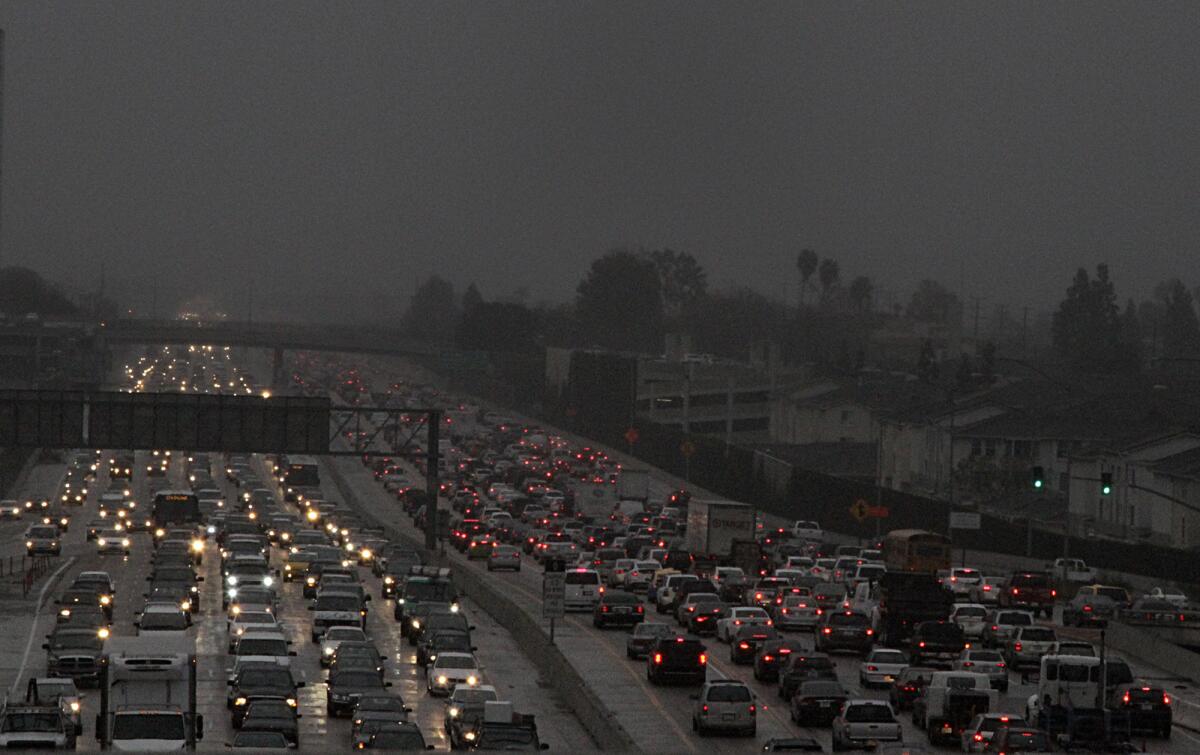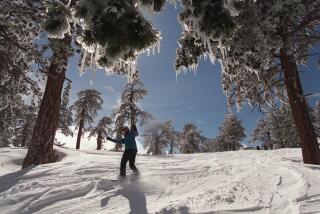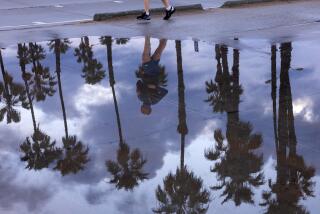Writing of rain in Los Angeles -- and elsewhere

This morning, while taking the dog for a walk, I felt a brief flurry of raindrops, like goose bumps, rise along my arm. We are due for a storm, of course — two of them, one this evening and another beginning tomorrow night — and we all know how badly California needs the water, in the era of the Ridiculously Resilient Ridge.
And yet, for me, the drought is just one piece of this equation — and only one reason I am happy for the rain. The other is the rain itself, that bringer of quiet, of melancholy, that blurrer of the world’s sharp lines.
Rain is the best thing about Southern California in winter; about anywhere it falls, really, but especially here.
“Easterners commonly complain that there is no ‘weather’ in Southern California,” Joan Didion observes in “Los Angeles Notebook,” “that the days and the seasons slip by relentlessly, numbingly bland. That is quite misleading. In fact, the climate is characterized by infrequent but violent extremes: two periods of torrential subtropical rains which continue for weeks and wash out the hills and send subdivisions sliding toward the sea; about twenty scattered days a year of the Santa Ana, which, with its incendiary dryness, invariably means fire.”
I could do without the Santa Ana, but in such a landscape, the rain — especially when it is torrential — is a revelation, and I have missed it this year.
Why? Because in California, rain reminds us (to borrow another phrase from Didion) of “how close to the edge we are.” It is often neither gentle nor reassuring, which the region’s writers have recognized all along.
In one of the climactic scenes in his novel “Mildred Pierce,” James M. Cain describes the New Year’s flood of 1934: “She slogged on,” he writes of his protagonist, “up the long hill to Glendale, down block after block of rubble, torrents, seas of water. Her galoshes filled repeatedly, and periodically she stopped, holding first one foot high behind her, then the other, to let the water run out.”
It’s a vivid image, of nature in ascendance, of the elemental world asserting itself over the human, as every Southern Californian understands will happen in the end. And yet, is it a contradiction to say that I also find the rain reassuring, that in its textures, its fluidity, I feel my boundaries start to slip?
I think of Robert Creeley, who in his poem “The Rain,” finds a vivid metaphor in the liquid weather. “Love, if you love me,” he writes, “lie next to me. / Be for me, like rain, / the getting out // of the tiredness, the fatuousness, the semi- / lust of intentional indifference. / Be wet / with a decent happiness.”
Or former poet laureate Robert Pinsky’s “Jersey Rain,” with its stirring final lines: “Original milk, replenisher of grief, / Descending destroyer, arrowed source of passion, / Silver and black, executioner, font of life.”
Yes, life and death, good fortune and bad — which, as Pinsky wistfully reminds us, “once had seemed so easy to tell apart.”
ALSO:
The great American novel? What’s that?
Kem Nunn’s ‘Chance’ gets under California’s skin
Lorrie Moore’s ‘Bark’ finds grandeur in the day-to-day
More to Read
Sign up for our Book Club newsletter
Get the latest news, events and more from the Los Angeles Times Book Club, and help us get L.A. reading and talking.
You may occasionally receive promotional content from the Los Angeles Times.







